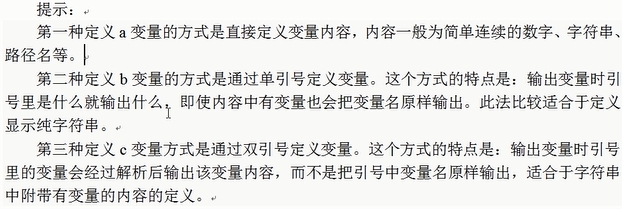2019独角兽企业重金招聘Python工程师标准>>> 
1.0.1 C语言中(.c)
1. 数据和函数是分开声明的,语言本身没有支持“数据和函数”之间的关联性。
2. 这种程序方法为程序性的,由一组“分布在各个以功能为导向的函数中”的算法驱动,处理共同的外部数据。
3. 例子
typedef struct _point
{int x;int y;
}Point;// 定义一个函数
void Point_Print(const Point *pd)
{printf("%d, %d", pd->x, pd-y);
}// 效率更高些的做法
#define POINT_PRINT(pd) \printf("%d, %d", pd->x, pd-y);// 前置处理宏
#define SET_VAL(p, xVal) (p.x) = (xVal);1.0.2 C++语言中(.cpp)
template <class type, int dim>
class CPoint
{
public:CPoint() {}CPoint(type coords[dim]){for (int idx = 0; idx < dim; idx++){m_coords[idx] = coords[idx];}}type& operator[] (int idx){assert(idx < dim && idx >= 0);return m_coords[idx];}
private:type m_coords[dim];
};1.0.3 C和C++的比较
1. “一个 ADT 或 class hierarchy 的数据封装”比“C程序中程序性地使用全局数据”好。
2. class CPoint 没有增加布局成本。
3. 数据成员和 C 结构体一样,成员函数在class声明中,但不在 object 中。
4. 非内联成员函数只有一个函数实体,而内联成员函数会在使用者上产生一个函数实体。
5. C++ 在布局和存取时间上的主要额外负担,是由 virtual 引起的,包括:
a. virtual function,用以支持一个有效率的“执行期绑定”。
b. virtual base class,用以实现“多次出现在继承体系中的 base class,有一个单一而被共享的实体”。
c. 多重继承下的额外负担,derived class 和其第二,或后继之 base class 的转换。
1.0.4 完整的代码
.h文件
#ifndef _PROJ10_PROJ10_proj10_
#define _PROJ10_PROJ10_proj10_//#define C_BETA
//#define CPP_BETA_1
//#define CPP_BETA_2
//#define CPP_BETA_3/**************************************************************/
#ifdef C_BETA
#include <stdio.h>typedef struct _point3d
{float x;float y;float z;
}Point3d;#define X(pt, _x) (pt.x) = (float)(_x);
#define Y(pt, _y) (pt.y) = (float)(_y);
#define Z(pt, _z) (pt.z) = (float)(_z);#define POINT3D_PRINT(pt) \printf("(%f, %f, %f)\n", pt.x, pt.y, pt.z);void Point3d_Print(const Point3d& pt3d)
{printf("(%f, %f, %f)\n", pt3d.x, pt3d.y, pt3d.z);
}
#endif // C_BETA
/**************************************************************//**************************************************************/
#ifdef CPP_BETA_1
#include <iostream>class CPoint3d
{friend std::ostream& operator<< (std::ostream& os, const CPoint3d& pt);public:CPoint3d(const float& x = 0.0, const float& y = 0.0, const float&z = 0.0){m_x = x;m_y = y;m_z = z;}~CPoint3d(void) {}void x(const float& x) { m_x = x; }void y(const float& y) { m_y = y; }void z(const float& z) { m_z = z; }float x(void) const { return m_x; }float y(void) const { return m_y; }float z(void) const { return m_z; }private:float m_x;float m_y;float m_z;
};inline std::ostream& operator<< (std::ostream& os, const CPoint3d& pt)
{os << "(" << pt.x() << ", " << pt.y() << ", " << pt.z() << ")" << std::endl;return os;
};#endif // CPP_BETA_1
/**************************************************************//**************************************************************/
// 坐标类型参数化
#ifdef CPP_BETA_2
#include <iostream>template <class type>
class CPoint3d;template <class type>
std::ostream& operator<< (std::ostream& os, const CPoint3d<type>& pt);template <class type>
class CPoint3d
{friend std::ostream& operator<< <type>(std::ostream& os, const CPoint3d<type>& pt);public:CPoint3d(const type& x = 0.0, const type& y = 0.0, const type&z = 0.0){m_x = x;m_y = y;m_z = z;}~CPoint3d(void) {}void x(const type& x) { m_x = x; }void y(const type& y) { m_y = y; }void z(const type& z) { m_z = z; }type x(void) const { return m_x; }type y(void) const { return m_y; }type z(void) const { return m_z; }private:type m_x;type m_y;type m_z;
};template <class type>
std::ostream& operator<< (std::ostream& os, const CPoint3d<type>& pt)
{os << "(" << pt.x() << ", " << pt.y() << ", " << pt.z() << ")" << std::endl;return os;
};#endif // CPP_BETA_2
/**************************************************************//**************************************************************/
// 坐标类型和坐标数目都参数化
#ifdef CPP_BETA_3
#include <assert.h>
#include <iostream>template <class type, int dim>
class CPoint3d;template <class type, int dim>
std::ostream& operator<< (std::ostream& os, const CPoint3d<type, dim>& pt);template <class type, int dim>
class CPoint3d
{friend std::ostream& operator<< <type, dim>(std::ostream& os, const CPoint3d<type, dim>& pt);public:CPoint3d(void) {for (int i = 0; i < dim; ++i){m_coords[i] = 0;}}CPoint3d(type coords[dim]){for (int i = 0; i < dim; ++i){m_coords[i] = coords[i];}}~CPoint3d(void) {}inline type& operator[] (const int& idx){assert(idx < dim && idx >= 0);return m_coords[idx];}inline type operator[] (const int& idx) const{assert(idx < dim && idx >= 0);return m_coords[idx];}private:type m_coords[dim];
};template <class type, int dim>
std::ostream& operator<< (std::ostream& os, const CPoint3d<type, dim>& pt)
{os << "(";for (int i = 0; i < dim - 1; ++i){os << pt[i] << ", ";}os << pt[dim - 1] << ")" << std::endl;return os;
};#endif // CPP_BETA_3
/**************************************************************/#endif //_PROJ10_PROJ10_proj10_2. .cpp文件
#include "proj1.0.h"int main(void)
{
#ifdef C_BETAPoint3d pt;pt.x = 1.0;pt.y = 2.0;pt.z = 3.0;printf("(%f, %f, %f)\n", pt.x, pt.y, pt.z);Point3d_Print(pt);POINT3D_PRINT(pt);X(pt, 1.1);Y(pt, 2.1);Z(pt, 3.1);
#endif // C_BETA#ifdef CPP_BETA_1CPoint3d pt;std::cout << pt;
#endif // CPP_BETA_1#ifdef CPP_BETA_2CPoint3d<int> pt;std::cout << pt;
#endif // CPP_BETA_2#ifdef CPP_BETA_3CPoint3d<int, 2> pt;std::cout << pt;
#endif // CPP_BETA_3return 0;
}













